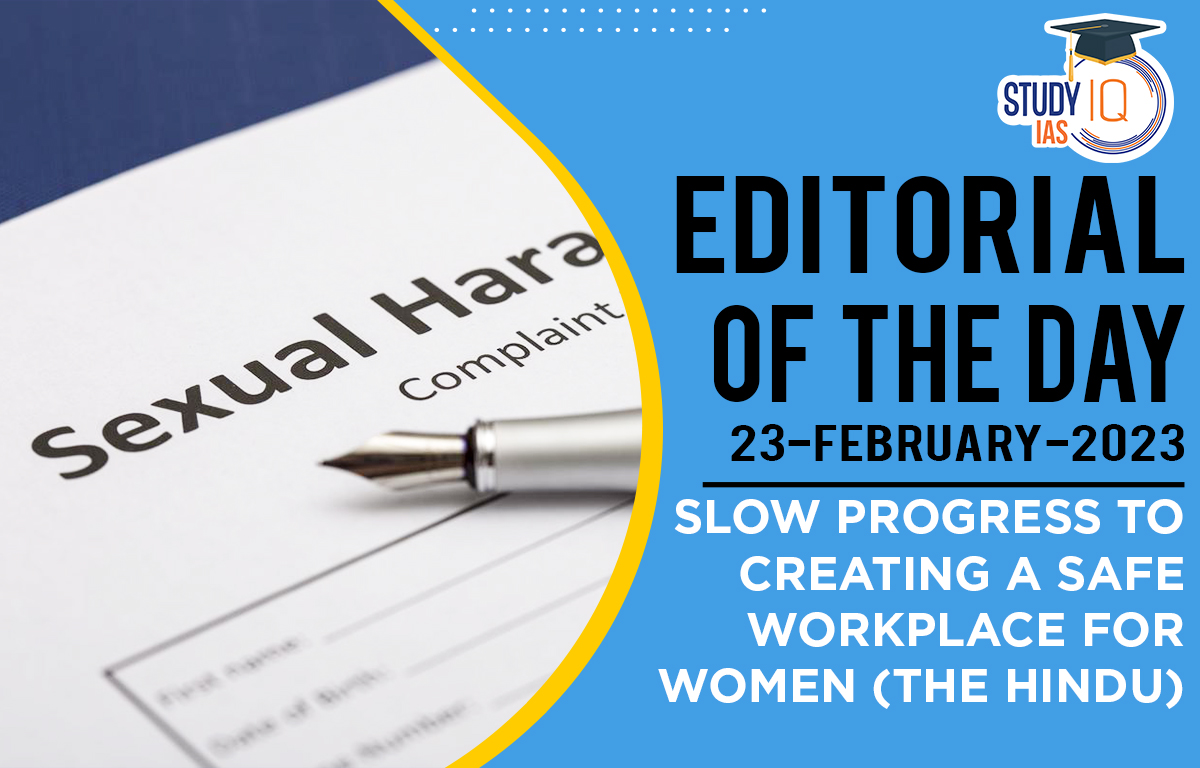Table of Contents
The recent case of allegations of sexual harassment by women wrestlers have put back the focus on safe work environment for women, both in government and private institutions.
Sexual harassment at the workplace is both direct and structural. Enabling environment for reporting direct violence has shown a significant improvement, but indirect violence remains poorly addressed, as it is deeply embedded in our social and economic structures.
- Employment imbalance prevalent between men and women is a clear indicator of structural sexual harassment in the organised and unorganised sectors.
- Higher number of men in workplaces allows them to feel entitled and empowered to take undue advantage of the patriarchal nature of society, which favours them.
- The numbers matter as an individual musters courage to voice one’s grievance when there are sufficient numbers in support of the affected person.
- If the number of women in leadership positions are not enough to generate confidence in subordinates, women in lower positions become reluctant to air their grievances.
Why Sexual Harassment Cases are not Addressed Promptly?
- Lack of safe working environment: The current redress mechanism is either non-existent or ineffective. Employer can easily threaten them with job discontinuity in case of filing complaints.
- This is also one of the factors for the poor participation of women in the labour force.
- Accused at helm of affairs: In many cases where allegations of sexual harassment are levelled against superior authorities, instead of addressing the complaint according to the law, the accused tries to derail the due process or attempts to malign the victim on flimsy grounds.
Improving the Workplace Environment for Women
- Short-term goals: The employer must provide the necessary women-friendly infrastructure, the setting up of internal complaint committees, and the spreading of awareness about the law and procedure of grievance redress.
- Medium-term goals: It can include the increasing of female participation in the labour force, improving tooth-to-tail ratio, and providing incentives to prevent job drop-outs such as paid maternity leave.
- Long-term goals: It is necessary to address the deep-rooted structural and cultural violence which puts women in a disadvantageous position.
- Changes are required in the existing socio-cultural and economic structures to eliminate indirect violence.
Way Forward
- The Vishaka guidelines framed by the Supreme Court in 1997 on reporting harassment are meant to be followed by government and private institutions equally in truest of spirit.
- Women should be aware of their rights (Fundamental Rights, Duties), procedures (IPC, CrPC) and the associated legal frameworks (POCSO, POSH) in the country for filing a complaint of sexual harassment.
- Social conditioning and the environment of the family and early schooling matters the most during the growth of children.
- Unless both parents respect each other and treat their girl and boy child equally, they grow up learning this inequality as a normal phenomenon.
- In absence of early development of equality mindset, the stereotyped power relation between the two would be difficult to change later. Therefore, like Charity, Clarity too begins at Home.


 Daily Quiz 11 July 2025
Daily Quiz 11 July 2025
 Operation Baam: Baloch Separatist Group ...
Operation Baam: Baloch Separatist Group ...
 Article 326 and Electoral Roll Revision ...
Article 326 and Electoral Roll Revision ...





















